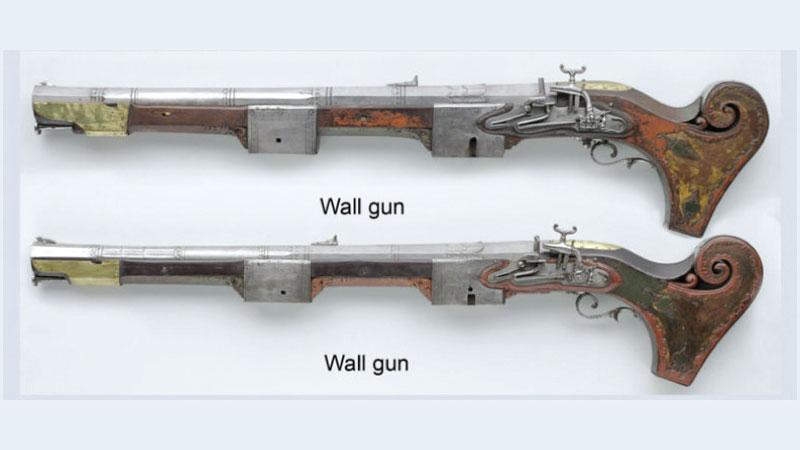
When the Ambassador of Netherlands Bonnie Horbach called on Prime Minister Dinesh Gunawardena immediately after assuming office last year, she said the Dutch Government planned to return some of the artefacts taken during the period of the Dutch rule in Sri Lanka two centuries ago.
The Prime Minister asked her if they could be returned by February 4, 2023, when the country marks the 75th Independence Anniversary.
Ambassador Horbach said this would not be possible due to the need to complete renovation work at the Museum in Colombo where an air-conditioned chamber is being constructed to place the valuable artefacts. However, she promised to return these valuable heritage items before the end of the 75th anniversary year.
A cultural delegation led by State Secretary for Culture and Media in the Netherlands Gunay Uslu arrived in Colombo to sign the legal document transferring the ownership of the cultural artefacts that will be returned to Sri Lanka later this year. The objects include the famous cannon of freedom fighter Lewke Disawe, two gold kastanes (ceremonial swords), Sinhalese knives, silver kastane, and two guns.
Gunay Uslu is expected to meet with Prime Minister Gunawardena, Religious and Cultural Affairs Vidura Wickremanayake and senior Government officials.
Legal transfer of ownership will be signed at the Ministry of Buddhasasana, Religious and Cultural Affairs on August 28. The delegation will visit a few places with religious and Dutch historic value in Sri Lanka, such as Galle and Jaffna.
There will also be a public lecture conducted by the State Secretary at the auditorium of the Department of National Archives on August 29.
One of the artefacts returned to Sri Lanka is a Kastane, a unique dagger which has been named by the Europeans as ‘Sinhala Sword’. The sword has an exquisitely detailed scabbard with embossed decoration, chased and chiseled in low relief, and a bejewelled hilt set with rubies in gold mounts.
As is typical of Kandyan sword design, the pommel resembles the head of a lion, the signature motif of the Kandyan period and insignia of the ruling household.
The lion, elaborately cast, is entwined with the liya-pata vegetal motif, and mythical creatures (yali) breathing flames.
The Kastane is won by the Nilames (Custodians), who lead the Dalada Perahera in Kandy. The Kastanes differ according to different ranks of the wearer.
According to records, Kastane was designed by Sinhala craftsmen using the model of hunting daggers of Europe. The immediate source is likely Dutch, as the Dutch East India Company (VOC) routinely gifted swords and assorted mechanical novelties to the Kandyan Court as part of a broader strategy of securing trading concessions.
Some examples of these swords, with their Sinhalese decoration, have VOC blades, and it appears that most of the blades used in Kasthane are of European origin.
When President Maithripala Sirisena visited Russia in 2018, President Vladimir Putin presented him an ancient Sinhala Kastane, which was among the collection of valuable artefacts in the Russian President’s collection.
The uniqueness of the Kastane presented by President Putin contained unique elaboration of decoration, with the bejewelled lion’s head hilt superbly modelled and detailed, with gold-set gemstones in the eyes.
The cannon of Lewke Disawe is richly ornamented with silver, gold and gemstones. The cannon, popularly called Maha Tuwakkuwa (big gun) is a bronze ornamental cannon embellished with Kandyan motifs such as liyawel, kalpavrukshaya and narilata. It has an inscription which confirms ‘Kandyan aristocrat Leweke Disawe is the donator of the cannon’.
The recipient’s name is not in the inscription. The research undertaken by the Rijksmuseum Conservation and Science Department in the Netherlands confirmed that Lewke Disawe had gifted it to King Sri Vijajaya Rajasinghe who ruled Kandy from 1739 to 1747.The cannon interestingly carries a shield which resembles the Kandyan Royal monogram.
The Ministry of Culture as well as the Department of National Museums have expressed appreciation to the Netherlands Government for the decision to return the valuable artefacts of immense archaeological value.
“This is a historic moment,” Uslu said in a press statement. “It’s the first time we’re following recommendations… to give back objects that should never have been brought to the Netherlands. But more than anything, it’s a moment to look to the future. We’re not only returning objects; we’re also embarking on a period of closer cooperation with Indonesia and Sri Lanka in areas like collection research, presentation and exchanges between museums.”
In 2020, a Dutch Council for Culture report produced by a committee chaired by human rights lawyer Lilian Gonçalves-Ho Kang You recommended that the country should “unconditionally” return objects it was reasonably sure were lost involuntarily by countries under its colonial authority.
Many of the objects to be returned are in the National Museum of World Cultures. Six other colonial artifacts claimed by Sri Lanka are currently in the collection of the Rijksmuseum, the Netherlands’ national museum of arts and history; this is the first repatriation of such artefacts from the museum following provenance research that began in 2017.
The Cannon of Kandy, for instance, was looted by troops from the Dutch East India Company during the 1765 siege and the plunder of Kandy, and it was later gifted to William V, Prince of Orange.
Sri Lankans will soon get a chance to see these artefacts at the Colombo National Museum.
